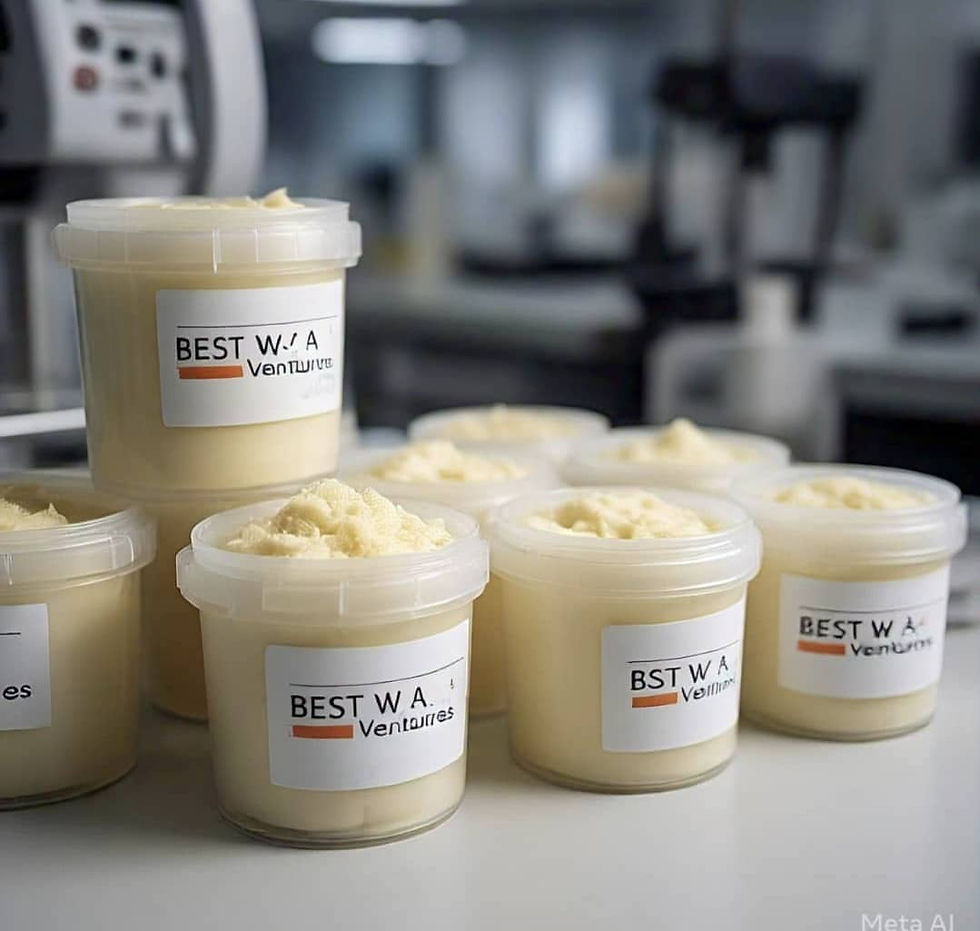Reclaiming the Shea Butter Industry: West Africa’s Path to Ownership and Prosperity
- OTI Editor

- Sep 9
- 4 min read

Shea butter has become an essential component in the global cosmetics and food sectors, valued for its moisturizing, anti-inflammatory, and antioxidant benefits. In 2024, the global market for shea butter was worth USD 2.41 billion, with forecasts predicting it will reach USD 3.75 billion by 2030, growing at a 7.9% CAGR. More than 80% of global shea butter sales are linked to cosmetics and personal care products, driven by increasing demand from clean beauty brands, vegan food manufacturers, and pharmaceutical companies. However, despite being the main source of shea nuts, West African countries capture only a small portion of this value. The region remains mostly excluded from the lucrative stages of processing, branding, and distribution.
For decades, previous administrations across West Africa allowed foreign companies to export raw shea nuts in bulk, bypassing local processors and stripping communities of economic opportunity. This practice has:
Undermined local value addition, leaving producers with minimal returns
Reduced women in the shea sector to low-paid pickers, often working under exploitative conditions
Stressed domestic processors, who struggle to compete with foreign buyers offering upfront cash for raw nuts
Drained regional economies, as profits from refined shea butter are captured abroad
This extractive model has resulted in thousands of women—who are the backbone of the shea industry—being excluded from prosperity, even though their labor drives a billion-dollar market. Producers and exporters of shea-based products have appealed to various authorities to prohibit the export of raw shea nuts. Following much discussion, the region has experienced policy changes, with Burkina Faso at the forefront.
It’s time for West Africa to own the shea narrative—from nut to butter, from village to global shelf.
Shea Olein - Biofuel and Food Grade (1MT)
Buy Now
Recently, there have been changes in policy. In response to the historical impact of exporting shea nuts, some West African countries are taking action. Burkina Faso and Nigeria have already banned the export of raw shea nuts to safeguard local processors and enhance livelihoods. Ghana plans to implement a similar ban in 2026, following persistent advocacy from industry leaders and cooperatives who have appealed to the new administration.
Management of Organic Trade and Investments (OTI) enthusiastically embraces the recent policy shifts:
These bans are not protectionist; they are corrective measures aimed at reclaiming economic control and ensuring that value remains within the region.
Job Creation Potential in the Shea Industry (Combined Impact Across Burkina Faso, Ghana, and Nigeria)
The shea industry offers significant potential for West Africa, not only as a source of export income but also as a catalyst for job creation and community development. In Nigeria, which accounts for nearly 40% of the world's shea nut production, the industry is expected to create up to one million jobs, particularly as the country enforces its ban on raw exports and moves towards local processing. Ghana, aiming to increase production to 400,000 metric tons, is anticipated to generate between 300,000 and 500,000 jobs, especially through mechanized harvesting, cooperative development, and enhanced refining capacity. Burkina Faso, already recognized for its organized shea networks and early adoption of export restrictions, could see the creation of between 250,000 and 400,000 jobs as the industry formalizes and grows.
Together, these three West African countries have the potential to create between 1.5 and 2 million jobs, many of which will directly support women in rural communities who have long been the backbone of the shea value chain. In terms of revenue, the combined annual income from the shea sector could surpass $1.1 billion in the short term, with projections reaching $4 billion or more if full value addition and global market access are realized. Nigeria aims for $3 billion by 2027, while Ghana’s 24-hour economy strategy positions shea among its top-performing commodities, with a revenue target of $640 million. Although Burkina Faso's exports are smaller in scale, they are expected to grow significantly as local processors capture more of the global demand.
The CEO and Head of Business Developments at OTI; Esthy Ama Asante; firmly asserts that the economic potential is achievable if the region persists in investing in infrastructure, implementing export bans, and enabling cooperatives to advance from raw supply to branded, high-value shea products. The shea industry has evolved from merely supporting rural livelihoods to becoming a strategic foundation for inclusive growth, trade sovereignty, and African excellence
The Promise of Local Value Addition
With limitations on raw exports, West Africa can now focus on processing, branding, and market ownership. This transition will:
Empower women’s cooperatives to become full-fledged producers, not just pickers
Create thousands of jobs in refining, packaging, logistics, and export compliance
Boost regional GDP through higher-margin exports
Attract ethical investors and global buyers seeking traceable, community-driven supply chains
Strengthen trade ecosystems that prioritize sustainability, transparency, and African excellence
At Organic Trade & Investments, we believe that West Africa doesn’t merely produce shea—it embodies its essence. For too long, the region has been sidelined in a global industry it sustains. The recent bans on raw shea nut exports are a critical first step toward reclaiming economic agency. But meaningful transformation requires more than policy—it demands a unified strategy to invest in local infrastructure, strengthen women-led cooperatives, uphold fair pricing, and elevate the narrative of African shea with authenticity and pride.
This is not just about trade—it’s about dignity, ownership, and long-term prosperity for the communities who have nurtured this resource for generations.
Organic Raw Shea Butter (1MT)
Buy Now































































Comments